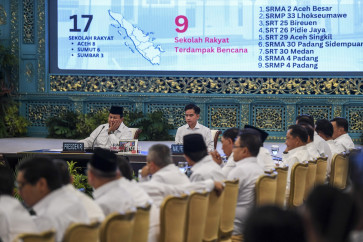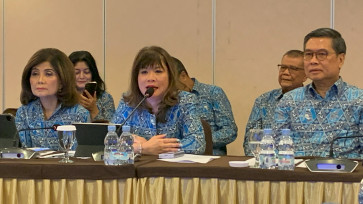Popular Reads
Top Results
Can't find what you're looking for?
View all search resultsPopular Reads
Top Results
Can't find what you're looking for?
View all search resultsGlorification of youth and their digital nativity
It feels like not a single day goes by without me reading the words “millennials” or “generation Z” in both news or on social media
Change text size
Gift Premium Articles
to Anyone
I
t feels like not a single day goes by without me reading the words “millennials” or “generation Z” in both news or on social media. They have been glorified as the generations of young people most highly engaged with digital technologies in our current digital environment.
We could also label them using Marc Prensky’s term, “digital natives,” which describes the generation of people born in or after 1980 who learn differently from previous generations — the “digital immigrants.”
Their high exposure to digital media leads to the assumption that they are super users of technology, or in other words, tech-savvy. Digital natives are considered active experiential learners. They are multi-taskers, who prefer graphics over texts.
However, claims about the digital skills of digital natives will be granted as true if the skills considered are only those medium-related skills, also called “button knowledge.” These skills encompass the technicalities of media use. For instance, sending or receiving emails and using hyperlinks while browsing the internet. While, problems for today’s youth concern higher level skills: content-related skills.
Having a proficiency in information skills means a person is able to define informational problems, access necessary information, appropriately select information and evaluate information sources.
Yet, as Barbara Combes’ research has shown, young people actually tend to display “satisficing” (the first piece of information is good enough) and “snaffling” (clicking on the first link in the results list) behavior.
Van Dijk and Van Deursen’s experiment in the Netherlands even reveals that older generations actually perform better at content-related and strategic tasks than younger generations.
Unfortunately, the older generations are impeded by their low level of medium-related skills. This means that while older people might not be as tech-savvy as the youth, they do have a better understanding of critical information.
Experience in life certainly brings some advantages.
These findings show that the youth need to learn how to access information efficiently and how to assess information critically. However, a frequent tendency to celebrate the abilities of young people leads to a lack of attention to the important role of schools and parents in the development of digital skills.
Peer support, on the other hand, is also important, but complex. It might even be constraining in certain ways.
Friends’ help is usually limited to the current trends on the internet, such as the use of social media. Other uses are rarely explained. Another reason is friends sometimes cause embarrassment rather than provide assistance, which creates a sense of fear among the youth as they do not want to look silly in front of their friends.
Another popular belief is that the youth are able to learn for themselves, through a self-learning or “Do-It-Yourself” approach.
The association between self-learning and digital skills is indeed stronger than the association between digital skills and learning in other contexts. However, self-learning does not always increase digital skills. Internet users who initially have weak digital skills generally do not benefit from this approach, compared to those with strong digital skills.
It is also only useful until a certain threshold of skills have been reached. If users want to acquire “better” skills, self-learning should not exclude learning via classes and guided tutorials.
Rather than continuing to glorify millennials and Gen-Z, some serious re-considerations of their digital skills are necessary. It is important to acknowledge that young people face problems regarding content related skills (which include information, communication, content creation and strategic skills), despite their technical prowess. High exposure to the internet and constantly communicating through digital media does not automatically mean that the youth are skillful users.
Since learning by autodidact or with help from parents and peers is still insufficient, digital literacy needs to be promoted and developed widely. The #siberkreasi movement in Indonesia is a good start, but I personally think we still need to embed digital literacy (or media literacy in general) into school curriculum programs.
On the other hand, the motivation and future consideration to enhance digital skills have to be built within the youths’ mindset either through their inherent interest in technology or by showing them how digital skills could help them achieve certain life goals.
_________________________
The writer is a student of the Master in Digital Communication Leadership program at Vrije Universiteit Brussels & Paris-Lodron Universitat Salzburg.










